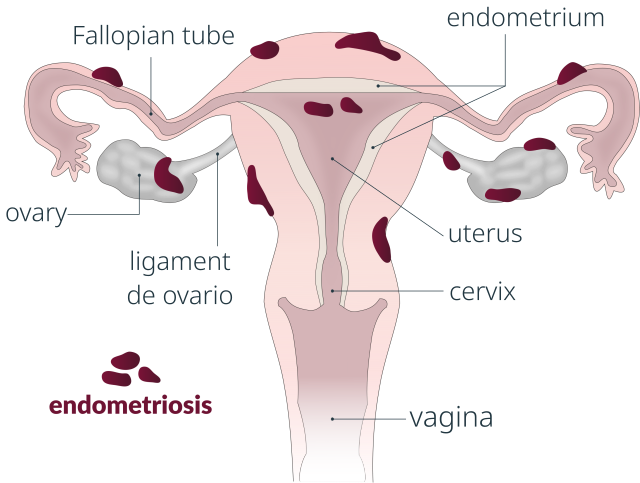Endometriosis is a chronic medical condition where the tissue lining the uterus (endometrium) extends to other areas within the pelvis, abdomen. or other parts of the body. It is a painful and often challenging condition that impacts millions of individuals worldwide, primarily women of reproductive age. In this article, we will explore the causes, symptoms, diagnosis, and treatment options for endometriosis.
Causes of Endometriosis
While the exact cause of endometriosis remains unclear, several theories have been proposed, including:
- Retrograde Menstruation: This theory suggests that during menstruation, some menstrual blood and tissue flow backward through the fallopian tubes into the pelvic cavity instead of exiting the body. These tissue fragments then implant and grow in various areas, leading to endometriosis.
- Hormonal Factors: Hormones, especially estrogen, play a significant role in endometriosis. It is known that endometriosis tissue responds to hormonal fluctuations, which can trigger inflammation and pain.
- Genetics: There is evidence that endometriosis may have a genetic component, as it tends to run in families.
Symptoms of Endometriosis
Endometriosis can cause a wide range of symptoms, which may vary in severity and include:
- Pelvic Pain: Persistent pelvic pain, often worsening during menstruation, is a hallmark symptom of endometriosis.
- Dysmenorrhea: Severe menstrual cramps that interfere with daily activities.
- Chronic Pain: Pelvic and lower back pain that occurs throughout the menstrual cycle.
- Painful Intercourse: Pain during or after sexual intercourse.
- Painful Bowel Movements or Urination: Discomfort or pain during bowel movements or urination, especially during menstruation.
- Heavy Menstrual Bleeding: Excessive menstrual bleeding or irregular periods.
- Infertility: Endometriosis can lead to fertility issues, making it challenging for some individuals to conceive.
Diagnosis of Endometriosis
Diagnosing endometriosis can be challenging and often involves a combination of medical history, physical examination, and diagnostic procedures:
- Medical History: A healthcare provider will inquire about your symptoms, menstrual history, and family history of endometriosis.
- Physical Examination: A pelvic examination may reveal tender areas, nodules, or scar tissue that could indicate endometriosis.
- Imaging Studies: Ultrasound, MRI, or CT scans may be used to visualize the reproductive organs and any potential endometrial growths.
- Laparoscopy: The most definitive method for diagnosing endometriosis involves a surgical procedure called laparoscopy. During laparoscopy, a thin, lighted tube is inserted through a small incision in the abdomen to directly view and biopsy any endometrial tissue.
Treatment of Endometriosis
The treatment of endometriosis aims to manage symptoms, reduce pain, and improve fertility when desired. Treatment options include:
- Pain Medications: Over-the-counter pain relievers and prescription medications can help alleviate pain and discomfort.
- Hormone Therapy: Hormonal treatments, such as birth control pills, hormonal IUDs, or GnRH agonists, can help regulate the menstrual cycle and reduce pain.
- Surgery: Laparoscopic surgery can be used to remove endometrial growths and scar tissue (excision), improving pain and fertility. In severe cases, a hysterectomy (removal of the uterus) may be recommended.
- Fertility Treatments: If infertility is a concern, assisted reproductive techniques (ART) such as in vitro fertilization (IVF) may be employed.
- Lifestyle Modifications: Lifestyle changes such as regular exercise, a balanced diet, and stress management can help manage symptoms.
Conclusion
Endometriosis is a chronic and often painful condition that affects many individuals, primarily women of reproductive age. Early diagnosis and appropriate treatment are essential to alleviate pain, manage symptoms, and improve fertility when desired. If you suspect you have endometriosis or are experiencing symptoms, consult a healthcare provider for a proper evaluation and personalized treatment plan. With proper management, many individuals with endometriosis can lead fulfilling lives and achieve their reproductive goals.
